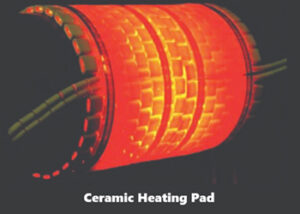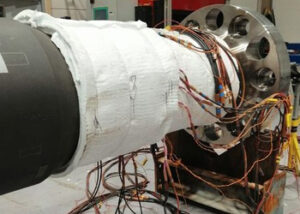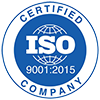
Post weld heat treatment (PWHT) is a controlled process in which a material that has been welded is reheated to a temperature below its lower critical transformation temperature, and then it is held at that temperature for a specified amount of time. It is often referred to as being any heat treatment performed after welding; however, within the oil, gas, Petrochemical and nuclear industries, it has a specific meaning. Industry codes, such as the ASME Pressure Vessel and Piping Codes, often require mandatory performance of PWHT on certain materials to ensure a safe design with optimal mechanical and Metallurgical properties.


The need for PWHT is mostly due to the residual stresses and micro-structural changes that occur after welding has been completed. During the welding process, a high temperature gradient is experienced between the weld metal and the parent material. As the weld cools, residual stress is formed. For thicker materials, these stresses can reach an unacceptable level and exceed design stresses. Therefore, the part is heated to a specified temperature for a given amount of time to reduce these stresses to an acceptable level. In addition to residual stresses, microstructural changes occur due to the high temperatures induced by the welding process. These changes can increase hardness of the material and reduce toughness and ductility. The use of PWHT can help reduce any increased hardness levels and improve toughness and ductility to levels acceptable for design
What is the application of post weld heat treatment?
A post weld heat treatment is a process that involves elevating the temperature of a material or materials following a welding process. A post weld heat treatment is performed to alleviate residual stresses, increase the strength, increase or decrease the hardness, and reduce the risk of cracking.




